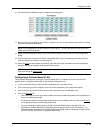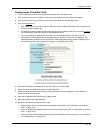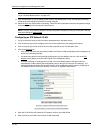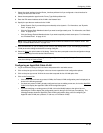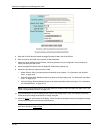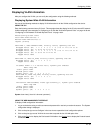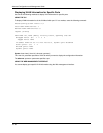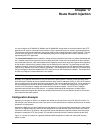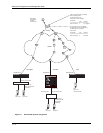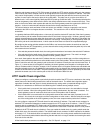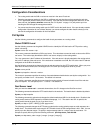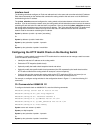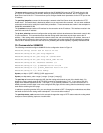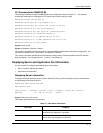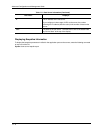
Chapter 17
Route Health Injection
You can configure an HP 9304M, HP 9308M, and HP 6308M-SX routing switch to check the health of the HTTP
application and “inject” a host route into the network to force a preferred route to an actively responding web host.
The web host can be directly attached to the routing switch or can be attached through Layer 2 switches. The web
host can be a web server or a Server Load Balancing (SLB) device configured with a virtual IP address (VIP)
representing the HTTP application.
The route health injection feature enables a routing switch to advertise a host route to a globally-distributed web
site. Gateway routers that receive the host route along with other routes to the same web site in other locations
can choose the best route. Web clients attached to the gateway servers thus enjoy fast response time regardless
of their location, because their gateway routers use the best path to the web site. By advertising the host route
instead of a network route to the web site’s IP address, the routing switch ensures that gateway routers receive a
route to the IP address only if that IP address is available. The routing switch uses a Layer-4 HTTP health check
that you configure to determine whether the HTTP (web) service on the IP address is available. The health check
and how to configure it are described later in this section.
NOTE: This feature supports health checks only for TCP port 80 (HTTP).
Normally, an IP address should exist on only one host on the public Internet. However, some third-party SLBs
allow the same IP address to exist on multiple machines using virtual IP addresses (VIPs). A VIP is an IP address
that you configure on a third-party SLB, then associate with “real” servers attached to the SLB. These real servers
are the web hosts that contain the web site requested by clients. In a simple SLB configuration, a single SLB
contains a VIP that maps to multiple real servers that have identical contents. The VIP is the IP address
associated with the web site on DNS servers. In a globally-distributed SLB configuration, multiple SLBs in
different networks throughout the Internet are configured with same VIP and are attached to sets of real servers
that contain the web site's content.
Configuration Example
Suppose you configure an SLB in Los Angeles and another one in New York to serve VIP 209.157.22.249. For
this example, also assume that you have a real server in Paris with the same IP address and the server is directly
attached to a routing switch.
Suppose the DNS entry for this IP address maps the address to a site named www.acmeweb.com. When a web
client in Los Angeles enters this domain in their web browser, the web browser goes to the client's local DNS to
resolve the name into an IP address. When the DNS returns the address to the web browser, the browser then
attempts to contact the HTTP port (usually TCP port 80) on the host with the IP address returned by the DNS.
Figure 17.1 shows an example of a globally-distributed SLB configuration in which the route health injection
feature is used.
17 - 1



